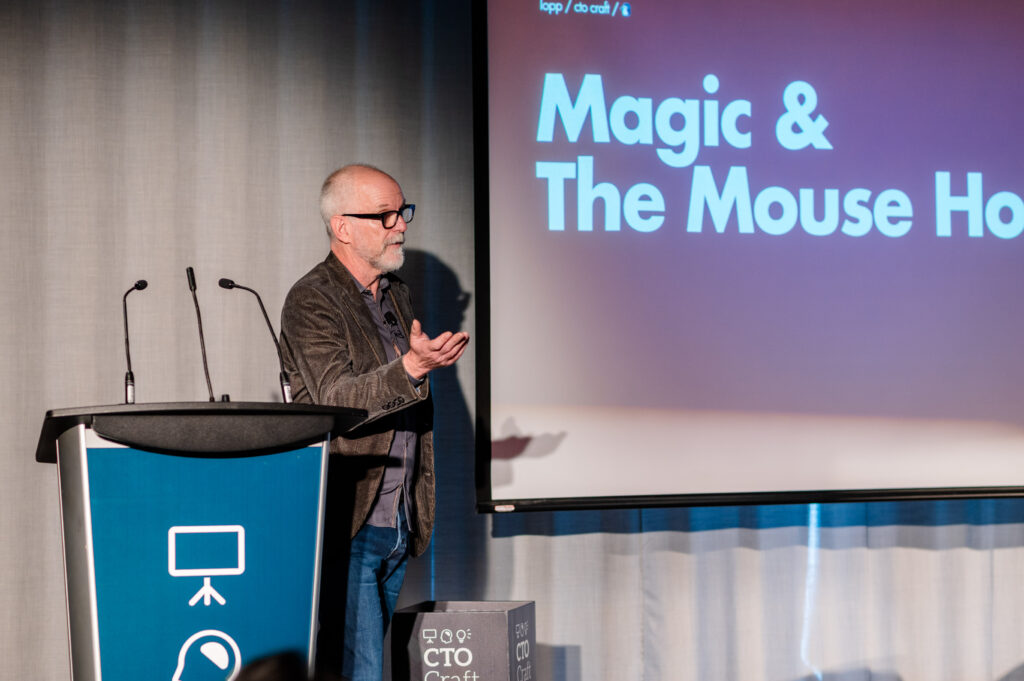At a tech conference, you don’t usually expect to be asked to imagine a lemon. But that’s exactly how our first keynote talk at CTO Craft Con: Toronto began.
Michael Lopp, Founder of Rands in Repose, stepped on stage, and encouraged the audience to hold up an imaginary lemon, feel its bumpy texture, and slice it open. The air filled with the imagined tang of citrus. Of course, there was no lemon. There was no knife either. But it didn’t matter. Everyone believed it. They could see it. They could feel it.
That was the trick. And the message.
Storytelling, he argued, is not a soft skill. It is THE skill. The one that turns good leaders into great ones. The one that helps people believe in something that does not yet exist.
Why stories are not just nice to have
Most leadership talks lean on frameworks, buzzwords and bullet points. This one did not. It was messy, playful and deeply human. And it worked.
Michael pointed out that most leaders he meets are introverts. They do not love public speaking. But that isn’t a problem. Storytelling isn’t about being loud or flashy. It’s about being real.
You already tell stories. When you explain why a decision was made, when you give feedback, when you pitch an idea. The difference is whether you know you’re doing it. Whether you’re intentional about how you bring others into your thinking.
The shape of a story
To show how storytelling works, Michael borrowed from a film about magicians. In The Prestige, a magic trick has three parts: the pledge, the turn and the prestige.
First, you show something ordinary. Then, you make it do something unexpected. Finally, you twist it again to leave your audience with a new perspective.
Good stories do the same. They start with something we know, add a surprise, then they end in a way that changes how we see the beginning.
This is not about entertainment. It’s about helping people understand. It’s about making something stick.
Tell the truth, even when it is hard
One story stood out. A new hire, asking for feedback week after week, suddenly stayed quiet. Then one day, she spoke up again. She told Michael he had totally messed up an all-hands meeting. She was right. And instead of taking offence, he felt relief.
In that moment, he knew he had her trust. They were no longer just colleagues. They were collaborators.
Stories like that do more than explain what happened. They show us what matters. They invite us to be honest.
Emotion is not optional
Michael also described a trip to Disneyland with his daughter. He had not wanted to go. He hates crowds. But when he saw the full-sized Millennium Falcon, he got teary. It caught him off guard.
This was not just nostalgia. It was connection. A reminder of how deeply stories shape our lives.
Disney, he said, does not sell theme parks. It sells stories. Everything else follows from that.
It’s the same in leadership. If people don’t feel something, they won’t remember it. And if they don’t remember it, they will not act on it.
What to do with this
The talk ended not with a slide full of takeaways, but with a quiet challenge.
Start listening.
Really listen to how others tell stories. Watch what lights them up. Notice what pulls people in. Then, practise. Share your own. Not because you want to be impressive, but because you want to be understood.
You do not need to be theatrical. You do not need to be perfect. You just need to be human.
That is where the magic is.
Want to see Michael’s full session?
If you want to see Michael’s full session from CTO Craft Con: Toronto you can find it, and many others, on Campus.
Not a member yet? You can join Campus here

